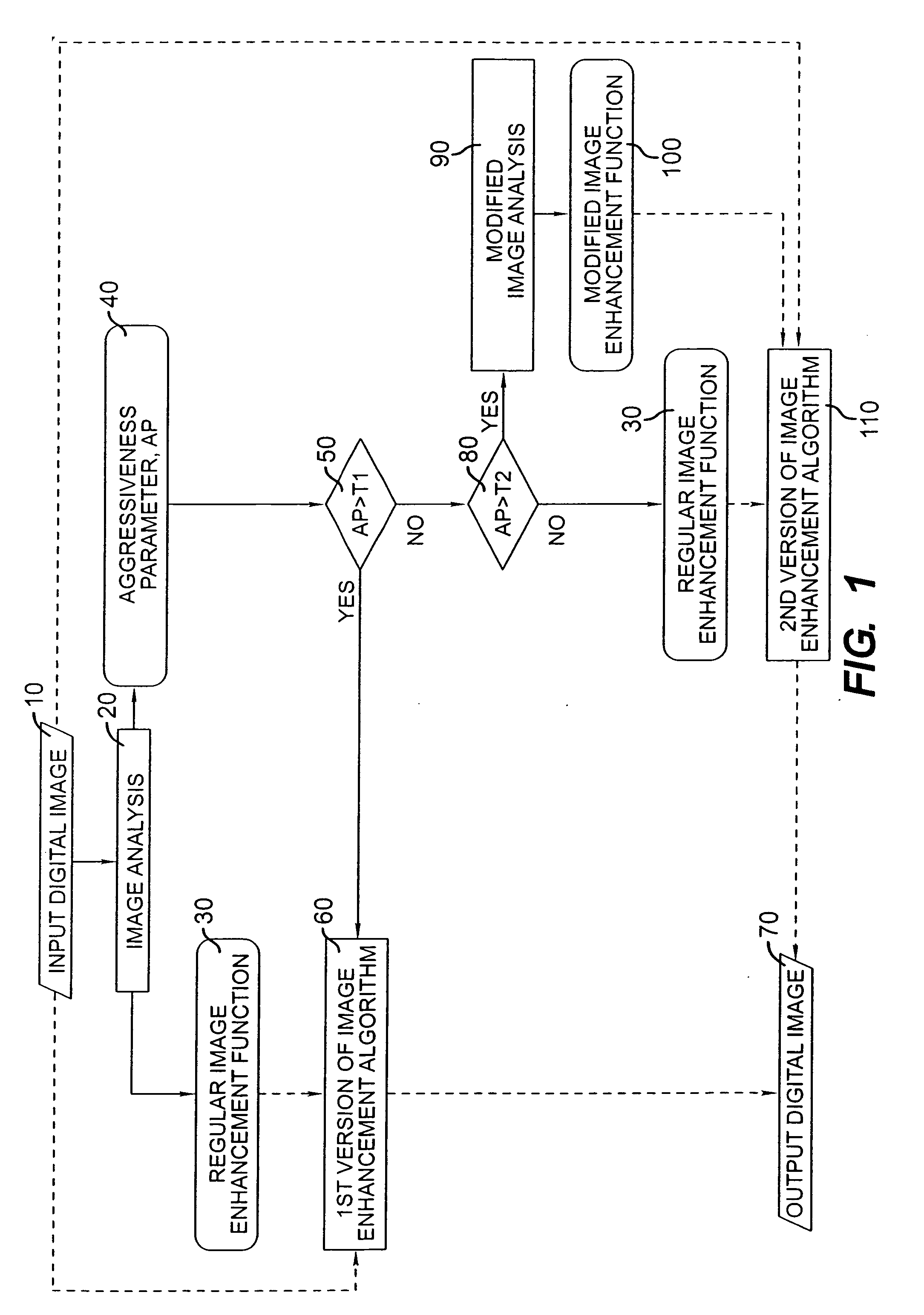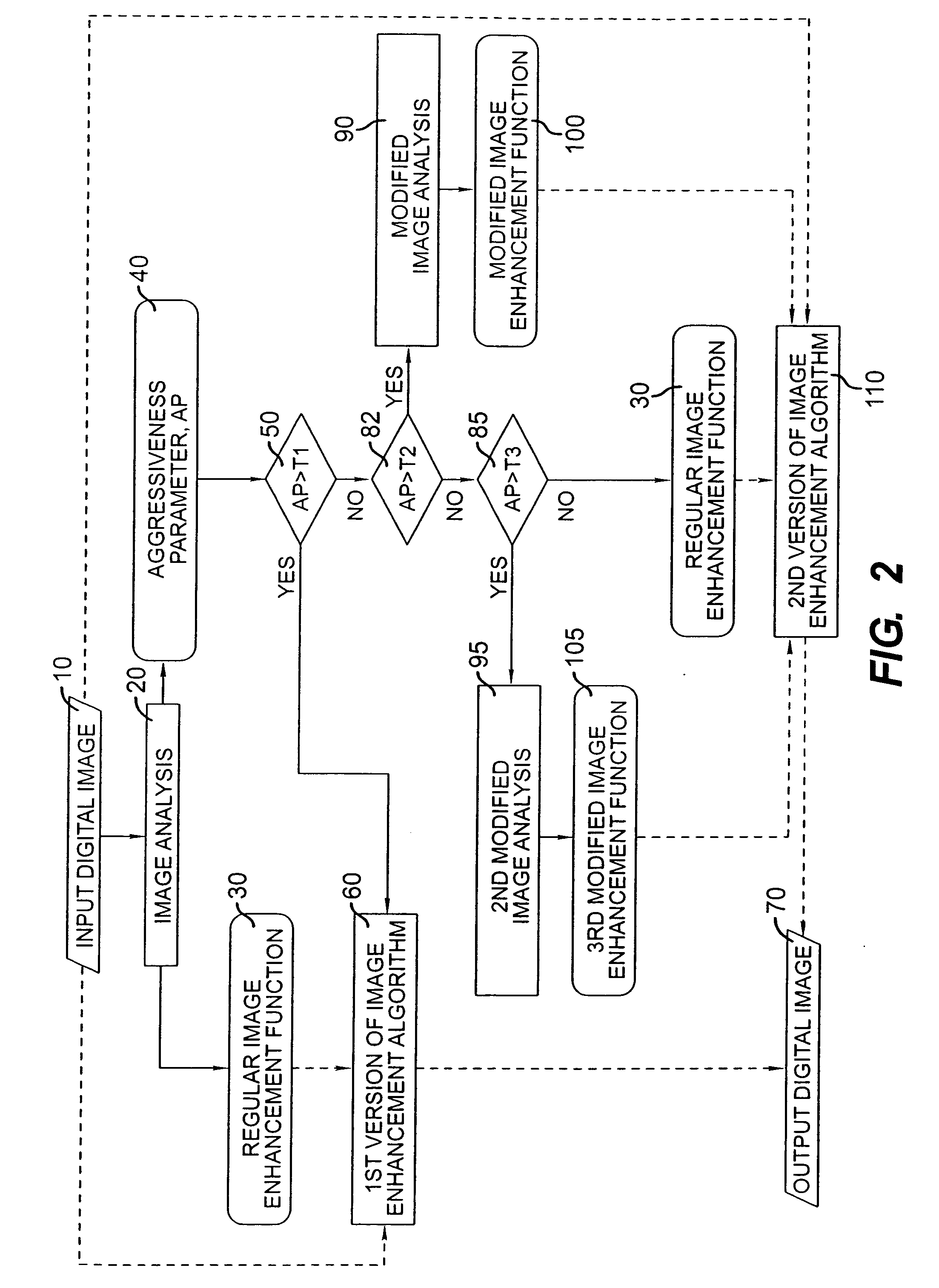Selection of alternative image processing operations to maintain high image quality
a technology of image processing and alternative processing, applied in the field of digital image processing, can solve the problems of reducing the application of complex image processing operations does not produce significant improvement in image quality, so as to reduce objectionable artifacts, and improve the overall image quality
- Summary
- Abstract
- Description
- Claims
- Application Information
AI Technical Summary
Benefits of technology
Problems solved by technology
Method used
Image
Examples
Embodiment Construction
[0022] In image processing, a choice is often available between two or more alternative techniques that vary in speed and aggressiveness. The term “aggressiveness” and like terms are used herein to refer to the extent of changes made by particular image processing steps and procedures. The methods and systems herein utilize techniques that are divisible into two parts: an enhancement function and an enhancement algorithm.
[0023] An “enhancement algorithm”, as the term is used herein, is an image science procedure that operates on an input digital image and has an enhancement function as another input. The enhancement algorithm produces a digital image that is in addition to or replaces the input digital image.
[0024] An “enhancement function” is an image science descriptor used by an enhancement algorithm that, along with the enhancement algorithm, produces a value or set of values as a function of an input digital image. The value or set of values are not a digital image.
[0025] Th...
PUM
 Login to View More
Login to View More Abstract
Description
Claims
Application Information
 Login to View More
Login to View More - R&D
- Intellectual Property
- Life Sciences
- Materials
- Tech Scout
- Unparalleled Data Quality
- Higher Quality Content
- 60% Fewer Hallucinations
Browse by: Latest US Patents, China's latest patents, Technical Efficacy Thesaurus, Application Domain, Technology Topic, Popular Technical Reports.
© 2025 PatSnap. All rights reserved.Legal|Privacy policy|Modern Slavery Act Transparency Statement|Sitemap|About US| Contact US: help@patsnap.com



